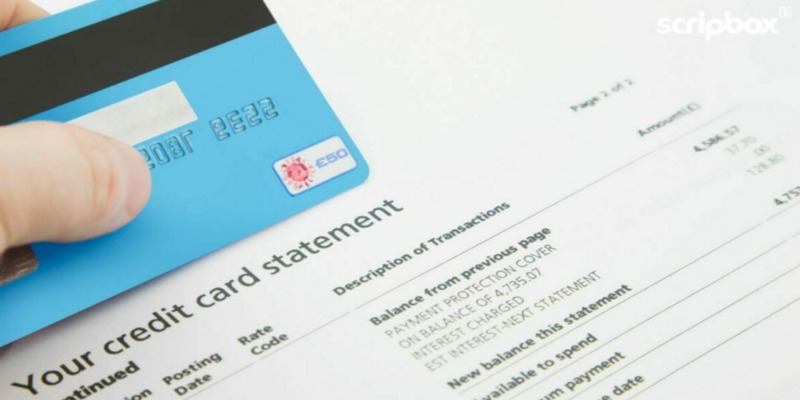Demystifying Credit Card Interest: Understanding the Credit Card APR
Oct 11, 2023 By Susan Kelly
Credit cards are handy financial tools, but they can also be a bit perplexing, especially when understanding how Credit card interest works. This article will break down the intricacies of Credit card interest in a conversational and simplified manner.
By the end, you'll have a clear picture of the credit card's Annual Percentage Rate (APR), Minimum payments, Compound interest, and how to manage your Credit card balance.
Understanding Credit card interest
Credit card interest can be likened to a fee for borrowing money using your card, with the APR being a critical factor in calculating it.
What is Credit card interest?
Credit card interest is essentially the cost you pay to conveniently borrow money using your credit card. When you make purchases with your credit card, you are, in essence, taking a short-term loan from the credit card issuer. This loan incurs interest, which is calculated based on the outstanding balance on your card.
How is Credit card interest Calculated?
The key factor in understanding Credit card interest is the Annual Percentage Rate (APR). The APR is expressed as a percentage and represents the annual cost of borrowing money. However, Credit card interest is not typically calculated on an annual basis; it's usually calculated on a daily or monthly basis. Here's a simplified breakdown:
Daily Balance Method: Most credit card issuers use this method. They calculate your average daily balance, apply the daily periodic rate (APR divided by the number of days in a year), and then multiply it by the number of days in your billing cycle.
Example: Let's say you have a $1,000 balance on a credit card with a 20% APR. The daily periodic rate would be roughly 0.0548% (20% divided by 365). If your billing cycle has 30 days, your monthly interest charge would be about $16.44.
The Credit Card APR

Understanding the Credit Card Annual Percentage Rate (APR) is crucial for effectively managing your credit card finances.
What is the Credit Card APR?
The Credit Card Annual Percentage Rate (APR) is a crucial term to understand when dealing with Credit card interest. It's the interest rate applied to your outstanding balance, expressed as an annual rate. The APR varies from card to card and can be fixed or variable. Here's what you need to know:
Fixed APR: This type of APR remains constant, which means your interest rate won't change unless your credit card company notifies you of a rate increase.
Variable APR: A variable APR is tied to a benchmark interest rate, such as the Prime Rate. Your APR will follow suit if the benchmark rate goes up or down.
Why is the APR Important?
The Annual Percentage Rate (APR) plays a vital role in assessing the expenses associated with carrying a balance on your credit card. A higher APR means you'll pay more in interest charges. It's essential to compare APRs when choosing a credit card and to understand the terms and conditions of your card's APR.
Translating APR to Monthly Interest
Let's break it down to make it easier to understand how the APR affects your daily life. Imagine you have a credit card with a 15% APR, and your monthly statement shows you have a $1,000 balance. To find out how much interest you'll pay monthly, you can follow these simple steps:
- Convert the APR to a monthly rate: 15% ÷ 12 = 1.25%
- Multiply the monthly rate by your balance: 1.25% x $1,000 = $12.50
So, in this scenario, you'd pay approximately $12.50 in interest that month. Remember that this is just an estimation, as your balance can fluctuate throughout the billing cycle.
Minimum payments and Compound interest
Minimum payments may seem convenient, but they often lead to the trap of Compound interest, where your debt can snowball over time.
Minimum Payments: The Trap to Avoid
Credit card statements typically include a "Minimum Payment Due" amount. You can pay this small amount to keep your account in good standing. However, it's crucial to understand that making only the minimum payment can be costly.
Compound interest: The Snowball Effect
Now, let's delve into the concept of Compound interest. Credit card interest is often compounded, which means you're charged interest not only on your initial balance but also on any previously accrued interest. It's like a snowball rolling downhill, getting bigger and harder to stop as it goes.
Here's a simplified example to illustrate the point:
- Your credit card has a $1,000 balance with a 20% APR.
- In the first month, you're charged $16.44 in interest, bringing your total balance to $1,016.44.
- In the second month, you're charged interest on the new balance of $1,016.44, slightly higher than the previous month.
Managing Your Credit Card Balance
Effectively managing your Credit card balance involves making payments above the minimum, paying on time, and using your card wisely to avoid unnecessary interest and fees.
Tips for Managing Your Credit Card Balance
Now that you have a better understanding of Credit card interest let's discuss some practical tips for managing your Credit card balance effectively and avoiding unnecessary interest charges:
Pay More Than the Minimum:
As previously discussed, making only the minimum payment can perpetuate an endless cycle of debt. Pay as much above the minimum to reduce your balance faster.
Use Balance Transfer Offers Wisely:
Some credit cards offer balance transfer promotions with low or 0% introductory APRs. While these can help consolidate debt, be mindful of balance transfer fees and the regular APR that kicks in after the promotional period.
Monitor Your Statements:

Consistently examine your credit card statements for any errors or unauthorized charges. Promptly reporting discrepancies safeguards your finances, can prevent potential complications, and save you money.
Conclusion
In conclusion, Credit card interest may seem complex at first. Still, with a little knowledge, you can make informed decisions about managing your Credit card balance and avoiding unnecessary interest charges. Understanding the APR, making more than the Minimum Payment, and staying vigilant about your credit card







